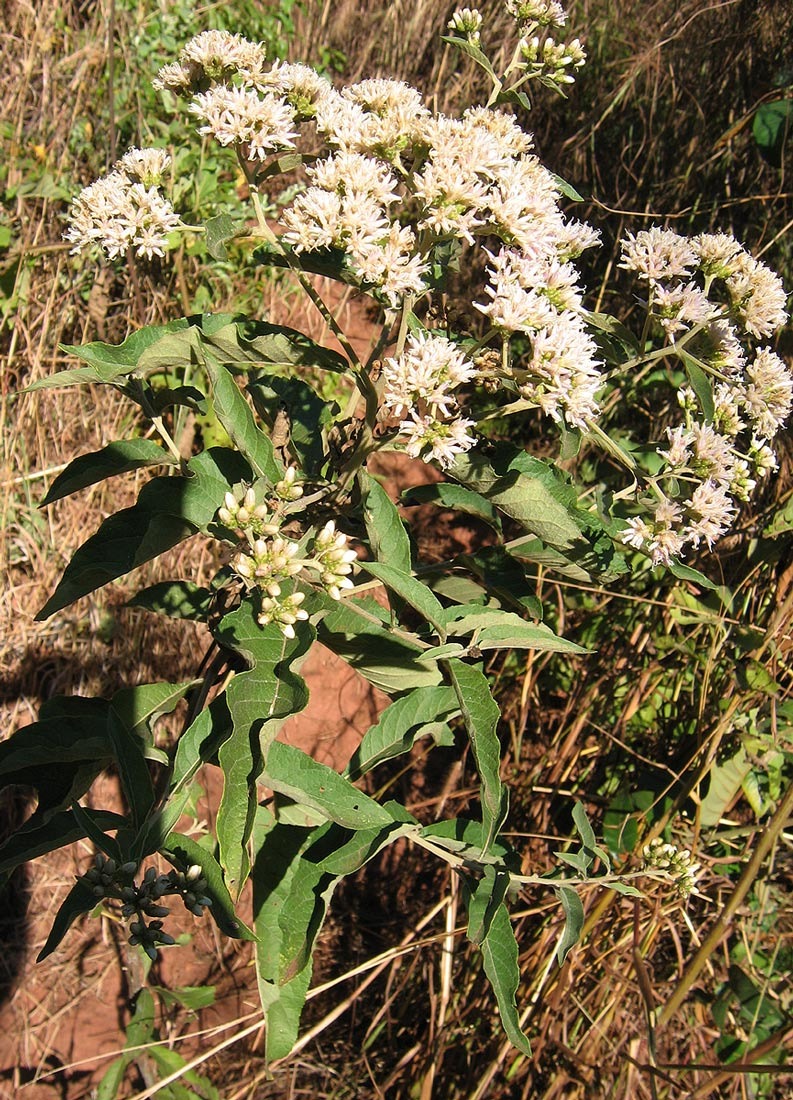Fact sheet about Vernonia amygdalina
Distribution and habitat
V. amygdalina occurs naturally along rivers and lakes, in forests margins, woodland and grassland up to 2800m altitude, in regions where mean annual rainfall is 750-2000mm. It requires full sunlight and prefers humid environment. It grows on all soil types but prefers humus-rich soils. Indigenous to Kenya, it is found in Western Kenya around Lake Victoria. It is also found at Kona National Reserve in Tana River district (420 m), in the eastern side of Mbololo forest in Taita (1400m), in Narok (2100m), in the Nguruman escarpment (900m) and Ol Donyo Orok (1400m).
Flowering and fruiting habits
It is a small tree up to 10 m tall. Bark light grey or brown, fissured, brittle branches. Leaves lanceolate, oblong, 10-15 x 4-5 cm, green, red-veining, apex and base tapering, petiole short. Flower heads thistle-like, small, creamy white, 10 mm long, grouped in dense heads, axillary and terminal, forming large clusted, 15 cm wide, sweetly scented. Fruit, a 10 ribbed achene, 1.5-3.5 mm long, pubescent, glandular, brown to black, crowned by the longer pappus bristles.
Uses other than pesticidal
Food- Bitter leaves of V. amygdalina are eaten as raw vegetables and cooked in soups. Roots and twigs are chewed as appetizers.
Medicinal- It is used as a medicine for relieving fevers, stomach disorders, to treat hepatitis, malaria, bilharzias, spots on skin and nausea.
Fodder- Leaves and shoots are used as fodder.
Fuel- The tree is used for firewood and charcoal.
Apiculture- It produces very light honey.
Timber- The termite-resistant branches are used as stakes to line plantations or live fence.
Propagation and cultivation
Propagation of V. amygdalina is possible by seed collected from dry flower heads. Stem cuttings are used as they grow faster. Cuttings are selected on leaf size, bitterness and growth characteristics. It is planted erect or slanted at 450 to obtain more side shoots. Seeds can be sown on nursery beds prepared from humus-rich soil, shaded from excessive heat or sunlight and watered regularly to germinate. Seedlings can be transplanted 4-6 weeks after emergence. Commercial farmers prefer to plant new crop at the beginning of a season or after the second year. It has also been micro-propagated in vitro.
Seed collection & Storage
Fresh mature fruits appear yellow and ripen in various sizes. Fruits are dried under at 30oC to 35oC for three to four days. When fruit turns to brown colour, seeds are extracted by gently rubbing the fruit between fingers to squeeze out the mucus like paste that cushions the seeds, the seeds are then washed in running water to separate seed from the pulp. Clean seeds are placed on an open tray to dry under shade for a period of two to three days.
There is no information on germplasm collection and viability of the seeds with storage.
Parts used
Leaves
Preparation
Essential oil
Uses
Can be used both pre and post-harvest
Target organisms
Against maize weevil, Sitophilus zeamais and broad range of field crop insects

